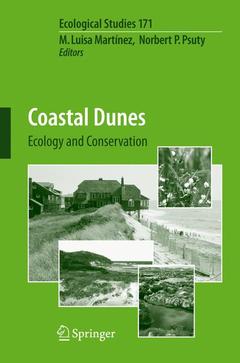Description
Coastal Dunes, 2004
Ecology and Conservation
Ecological Studies Series, Vol. 171
Coordinators: Martínez M. L., Psuty Norbert P.
Language: English
Subjects for Coastal Dunes:
Publication date: 10-2007
388 p. · 15.5x23.5 cm · Paperback
Publication date: 02-2004
388 p. · 15.5x23.5 cm · Hardback
Description
/li>Contents
/li>Comment
/li>
Coastal dunes occur in almost every latitude - from tropical to polar - and have been substantially altered by human activities. Many are already severely and irreversibly degraded. Although these ecosystems have been studied for a long time (as early as 1835), there has been a strong emphasis on the mid-latitude dune systems and a lack of attention given to the tropics where, unfortunately, much of the modern exploitation and coastal development for tourism is occurring.
This book brings together coastal dune specialists from tropical and temperate latitudes, which together cover a wide set of topics, including: geomorphology, community dynamics, ecophysiology, biotic interactions and environmental problems and conservation. A major product of this book is a set of recommendations for future research, identifying relevant topics where detailed knowledge is still lacking. It also identifies management tools that will promote and maintain the rich diversity of the dune environments in the context of continuing coastal development.
These books may interest you

Restoration of Coastal Dunes 158.24 €

Restoration of Coastal Dunes 158.24 €


